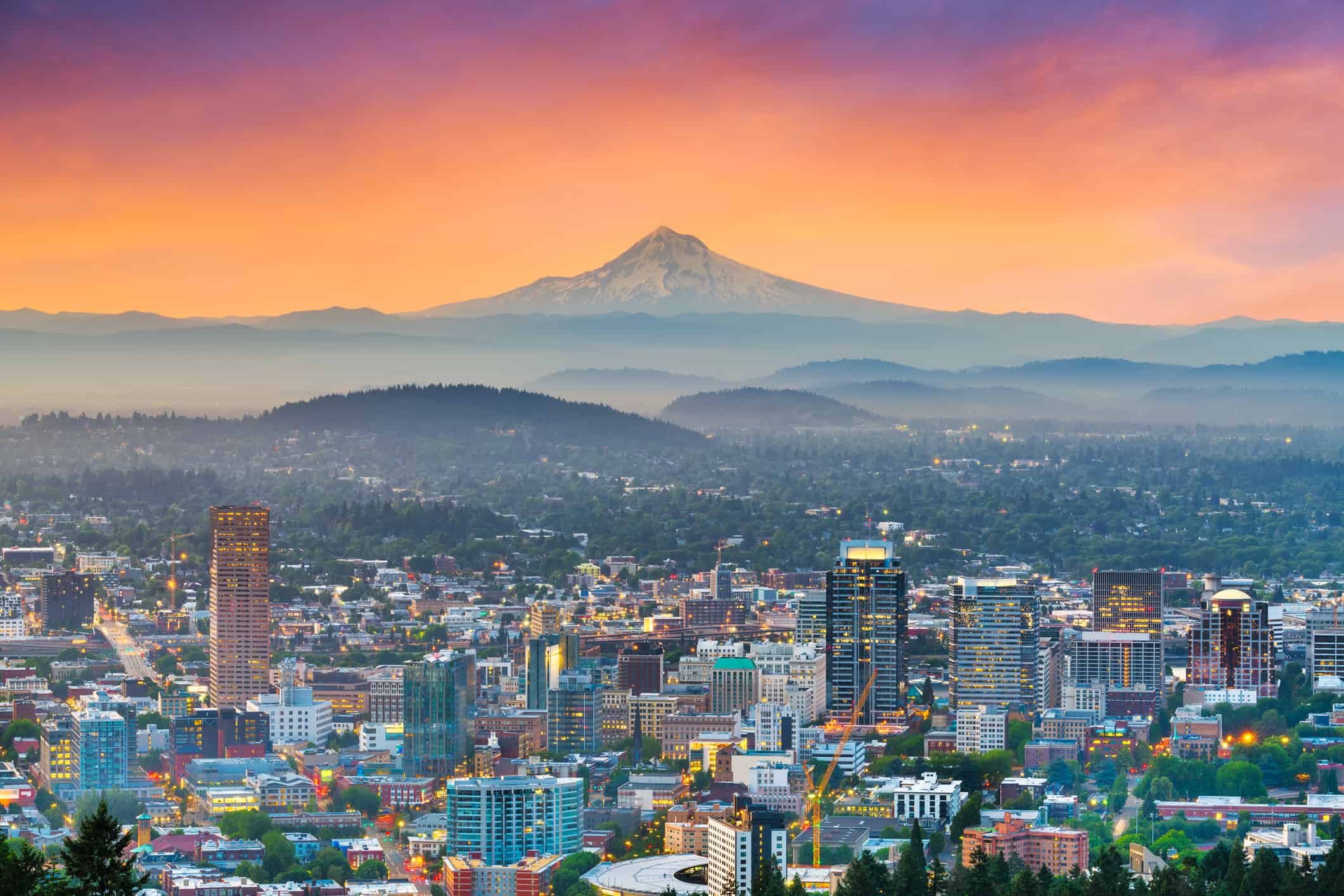Oregon ranks ninth largest state in the U.S. in terms of land area and enjoyed steady population growth until 2021 when it peaked at about 4.3 million citizens. Its current population is 4,223,973. While the state, overall, is experiencing a dip in its growth rate, many of its towns and cities are experiencing increased populations. Oregon citizens would argue there are lots of reasons to move to the Beaver State.
The Lewis and Clark expedition might be the most significant historic marker for Oregon. It laid the foundation for its adventurous spirit and perhaps contributed to the state’s commitment to preserving its wildlife and natural ecosystems. Known for veering off the beaten path, the hipster and counter-culture mindset colors Oregon as politically progressive, artistic, and mindful of supporting small and local businesses. That means Oregon might be the ideal place for nature lovers, artists of all stripes, and those looking for the perfect cup of artisanal coffee.
Population Growth
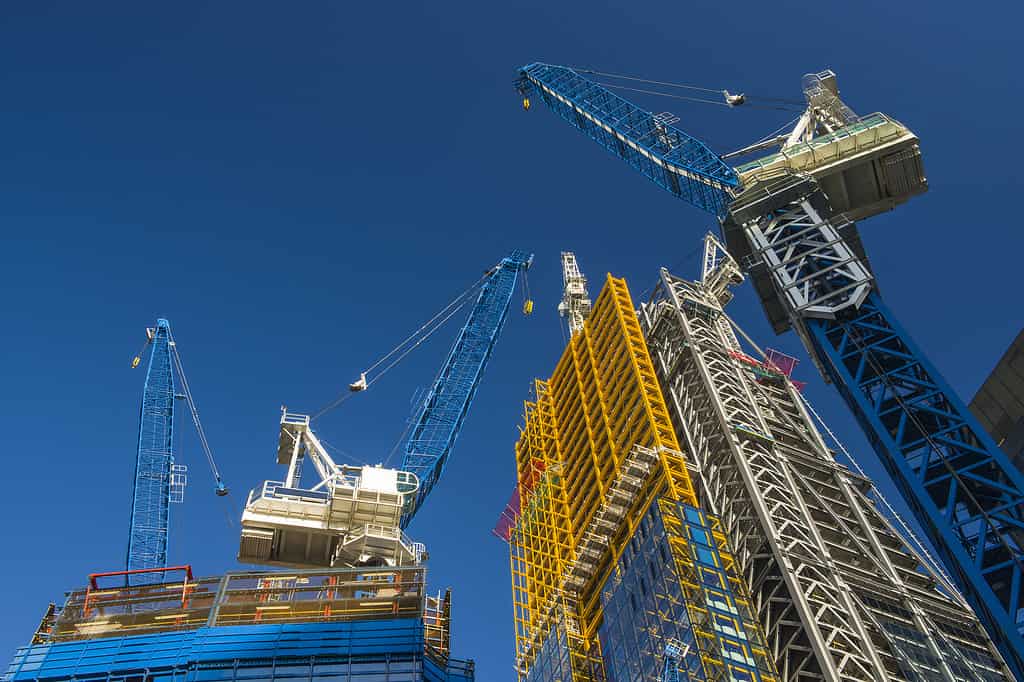
While it’s often considered positive for a town’s population to grow, it’s worth thinking about the speed of growth and how it could impact a town.
©kuczin/ via Getty Images
It’s generally common knowledge that a growing town means a thriving town. Population growth generates more tax revenue that, in turn, goes to transit systems, roads, and other infrastructure projects. That money also goes to parks, education, and the arts in an area. Many mayors may also consider it a feather in their town’s or city’s cap, equating population growth to growing desirability for a place.
Other city officials and academics don’t place the same value on population growth. Higher numbers on a census don’t necessarily equate to the citizens’ quality of life, reasonable commute times, or even better education. Paul Gottlieb, an economist and professor at Rutgers University, wrote a paper titled “Growth Without Growth” that argued increasing the number of people in a city doesn’t promise economic growth. There’s also a greater likelihood of greater congestion, higher pollution, and loss of open space. Gottlieb indicates that slow and steady wins the race of population growth. Slow and consistent increases in a town’s population were a stronger measure of its overall economic functionality and prosperity.
Whichever side of the argument you land on, the population growth of a town or city can be an important factor to consider if you’re planning to relocate. Read on and discover the Oregon towns with the fastest growth rate since 2020.
12. Eugene: 0.17% Growth Rate
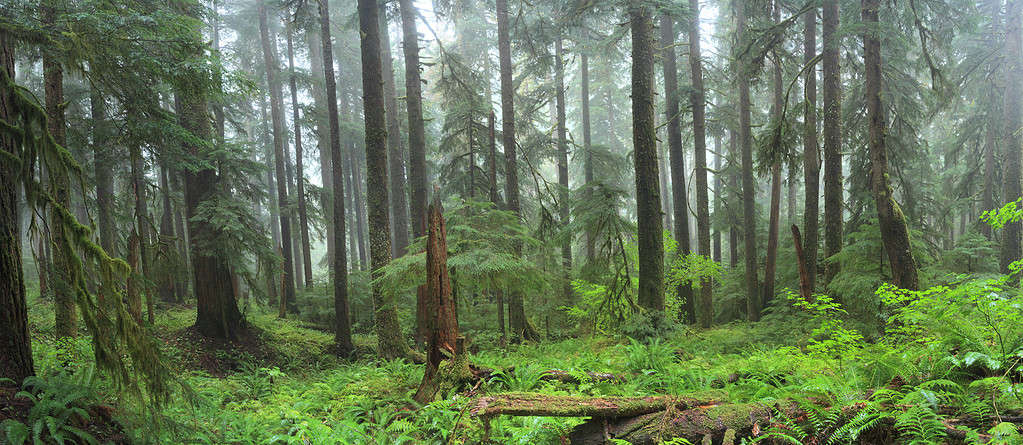
Eugene has the nickname Emerald Forest for the lush forests surrounding it.
©Stanislav_Moroz/ via Getty Images
Located in the eastern part of the state, Eugene Oregon has a projected population of 175,685. Its annual growth rate is 0.17% and it experienced a 0.51% increase from 2020 when the census recorded its population at 174,802.
Considered a Renaissance city, Eugene has something for everyone! It’s home to TrackTown USA, where elite athletes push their bodies and pursue their dreams. There is a rich history of indigenous peoples, and its current culture embraces both the arts and advances in tech. Eugene also goes by the Emerald City for the verdant, natural beauty of the surrounding fern forests.
11. Corvallis: 0.28% Growth Rate
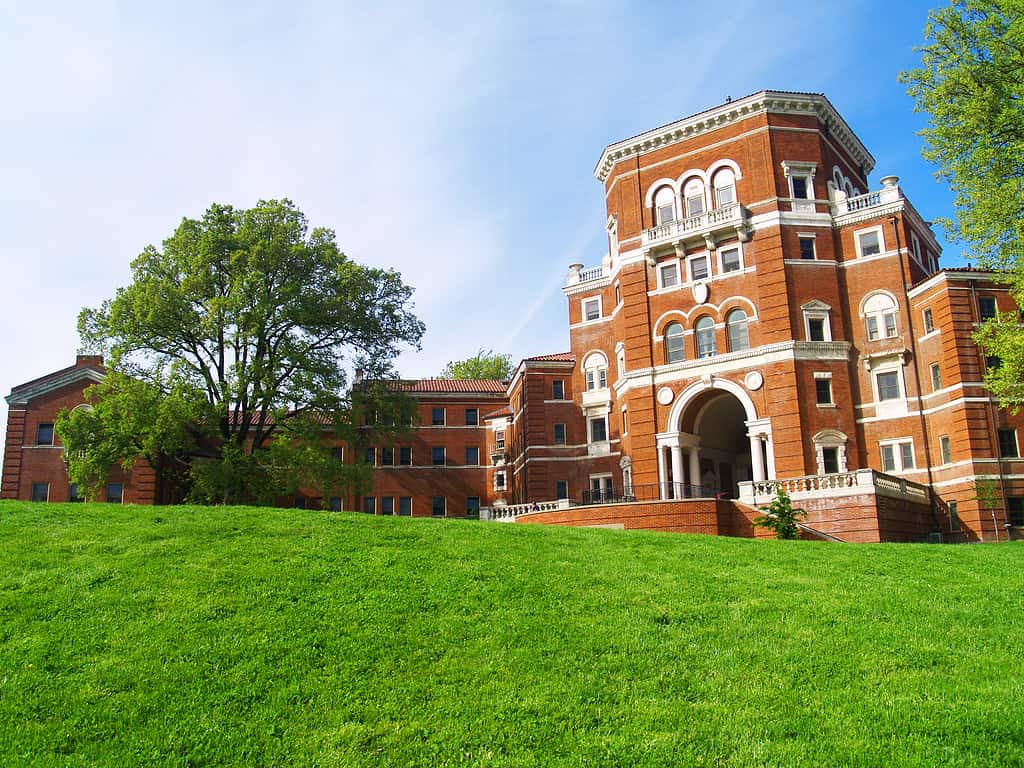
Weatherford Hall is a residence hall at Oregon State University located in Corvallis, OR. The university has the seventh-largest engineering program.
©devdogg/ via Getty Images
The next Oregon town experiencing the slow-and-steady growth rate is Corvallis. It’s less than an hour’s drive from Eugene and has a current population of 60,199. Its annual growth rate is 0.28%. According to 2020 census data, its population increased 0.84% from 59,697.
Corvallis is also the seat of government for Benton County, OR. Despite being in the fourth-smallest county in the state, Corvallis is growing. It’s home to Oregon State University and the Good Samaritan Regional Medical Center. Whether you pursue education, medicine, or some combination of the two, Corvallis could be just the place to put down roots!
10. Albany: 0.4% Growth Rate
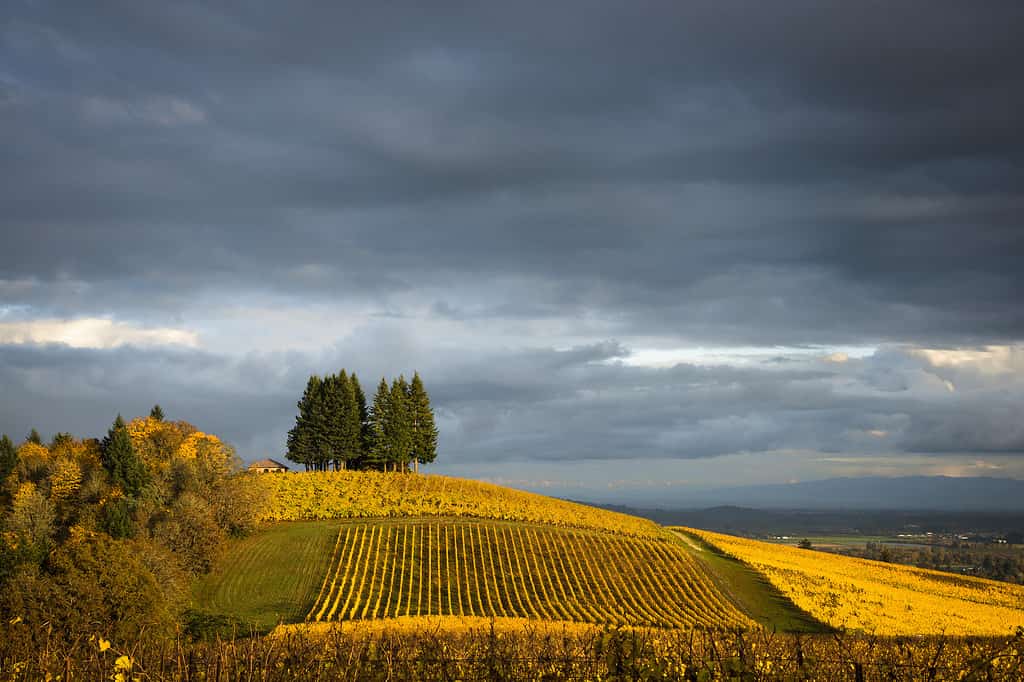
The Willamette Valley in Oregon has a history of farming. This history is a big influence on the food and wine that winds up in city restaurants like those in Albany, OR.
©RobertCrum/ via Getty Images
Albany, OR, is a stone’s throw from Corvallis (about a 20-minute drive). Its population is 57,289 with an annual growth rate of 0.4%. The population increased by 1.22% from 2020 when its population was 56,599.
The city was founded in 1848 with roots in farming. This might explain the farm-to-fork culture and perhaps the culinary allure is what brings growth to the city tucked in the Willamette Valley.
9. Scappoose: 0.54% Growth Rate
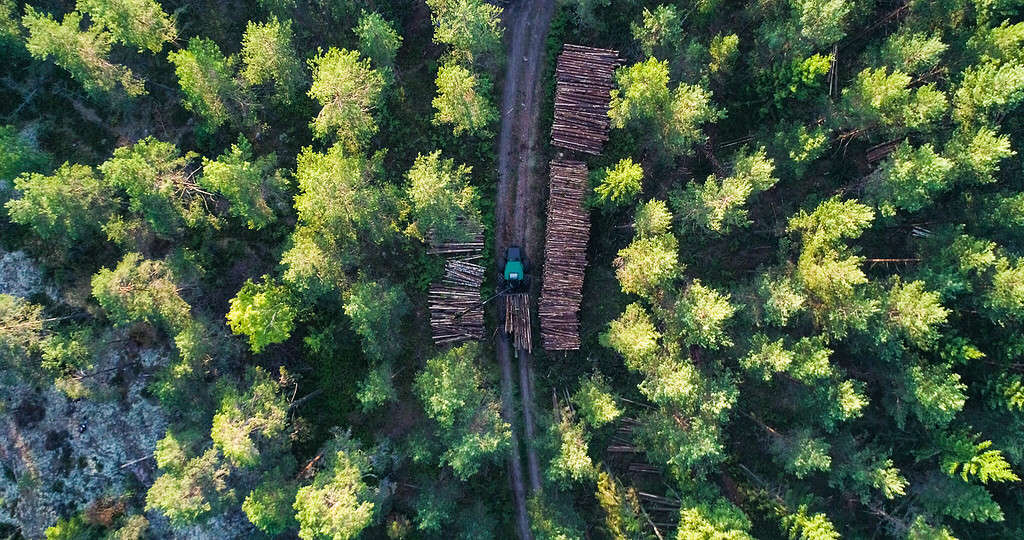
Forestry, like farming and agriculture, is one of the big industries in Oregon. Jobs that align with these industries could be part of what brings people to Oregon’s cities.
©Wirestock/ via Getty Images
About 30 minutes from Portland, Scappoose, OR, has a current population of 8,146. It increased 1.65% from 2020 when 8,014 was recorded.
As is the case with so much of Oregon, nature is a big part of what draws people to it. Scappoose is no exception. It’s surrounded by the quintessentially lush forests of the Pacific Northwest and sits on the Columbia River. Citizens of Scappoose enjoy views of the Cascade Mountains, too. With its economy based primarily on agriculture and forestry, nature is an integral part of living in Scappoose, OR.
8. Sandy: 0.64% Growth Rate

Whether in Sandy or nearby Portland, it’s easy to glimpse the Cascade Mountains over the city’s skylines.
©Mark Ingalls/ via Getty Images
Sandy, OR, is also in the northern part of the state. Its population is 12,907 with a yearly growth rate of 0.64%. The population increased by 1.93% since the 2020 census data recorded 12,662.
Like Scappoose, Sandy is close to the Cascade Mountain Range. The breathtaking mountain range runs from British Columbia through Washington, Oregon, and California. It even has volcanoes, which are referred to as the High Cascades! You likely know the Cascade Mountains by its highest peak: Mount Rainer.
And if the Cascade Mountains seem too intimidating, the Mt. Hood Scenic Byway winds through town. Sandy is the place for mountain lovers!
7. Salem: 1.09% Growth Rate

Farmers’ markets are a big part of Salem’s culture, even in their downtown. It’s an opportunity for farming to intersect with the arts and culture of the area.
©Sean Pavone/ via Getty Images
While it doesn’t have the same witchy reputation as its east-coast counterpart, Salem, OR, is known for being the essence of the Oregon experience, referred to as the most Oregon part of Oregon. Its current population is 181,620 and it has an annual growth rate of 1.09%. According to the 2020 census data, its population increased by 3.31% totaling 175,806 citizens.
Salem is also the state’s capital. Like many of the towns and cities listed here, it’s located in the Willamette Valley, making it an ideal place for farming. Farming and agriculture also mean lots of farmers’ markets. There is a nonprofit in Salem devoted to organizing farmers’ markets so that citizens can enjoy the fruits of labor — both literal and figurative — of the area.
6. Tigard: 1.4% Growth Rate
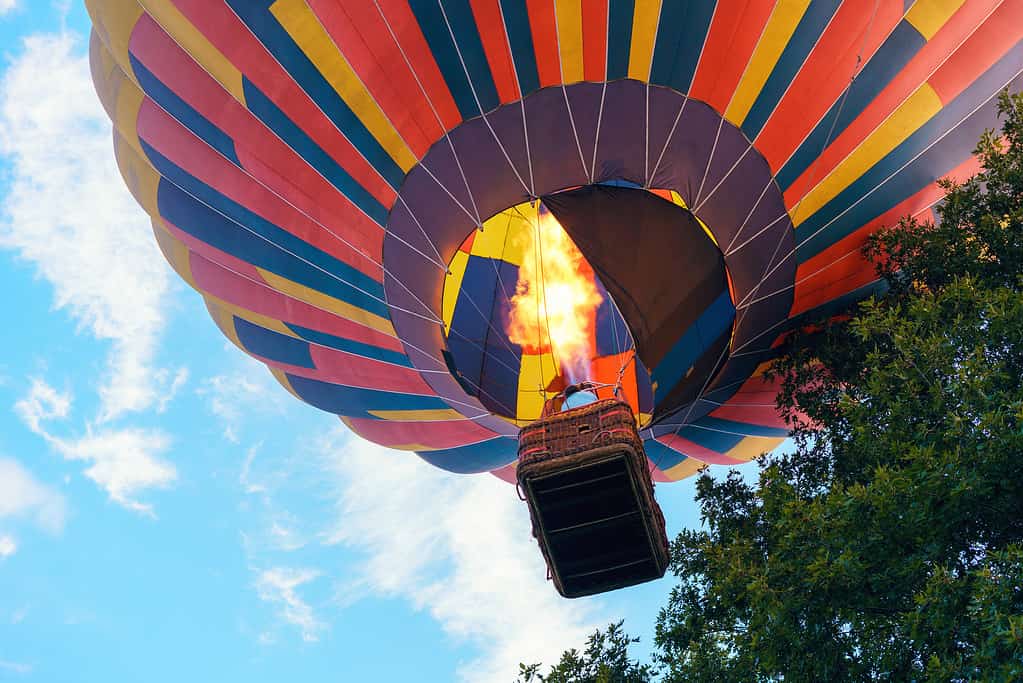
The Festival of Balloons is a big part of Tigard’s culture. Festival-goers can watch the balloons launch in the morning or at sunset. There are even opportunities to train as a balloon pilot!
©Andrei310/ via Getty Images
Take another short drive from Portland, Oregon’s largest city, and you’ll arrive in Tigard. It’s the next fastest-growing town on our list, with a population of 57,344. Its annual growth rate is 1.4% and it increased by 4.27% from 54,995 in 2020.
Tigard might be the ideal place for frugal shoppers and for those seeking some summertime whimsy. Washington Square and Bridgeport Village are premier shopping centers that offer popular brands and dining experiences that are tax-free. Each summer, the growing city hosts the Festival of Balloons, a carnival-style event where hot air balloons launch and float overhead to dazzle crowds. The nonprofit raises money for local organizations while also celebrating the community.
5. Warrenton: 2.25% Growth Rate
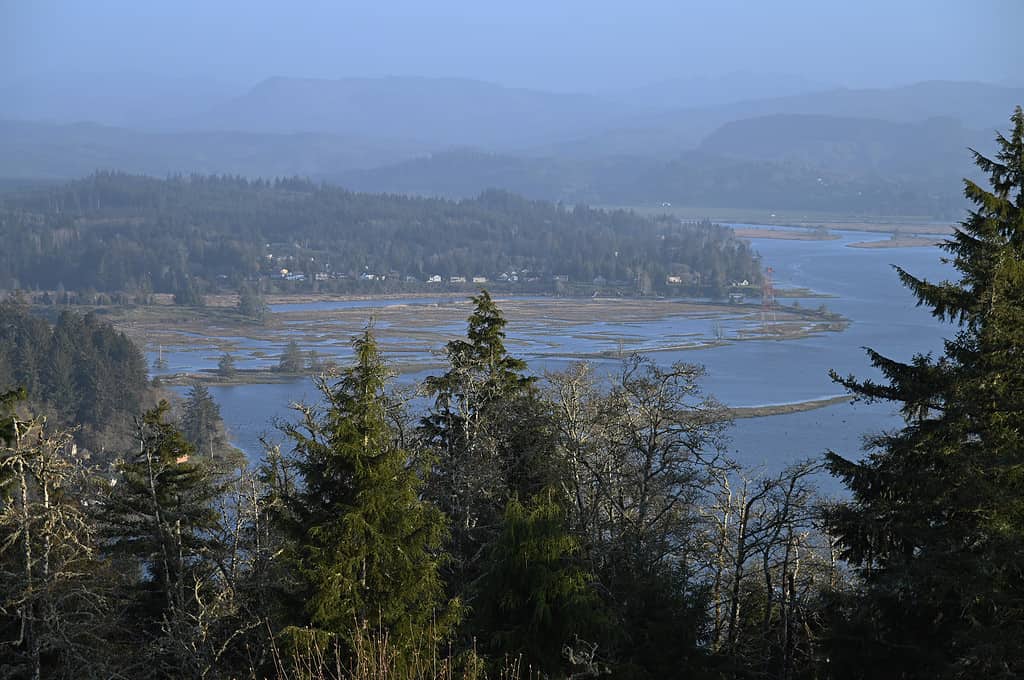
Warrenton, OR, sits on Youngers Bay. On the other side of the bay is Astoria, OR.
©WestWindGraphics/ via Getty Images
Located on the northwestern tip of Oregon, it’s no wonder why more people would flock to Warrenton, with its beautiful coastal views and charming Victorian homes. Its current population is still relatively small at 6,684, but it’s grown about 2.25% every year. The population increased by 6.91% since the 2020 census when it was 6,252.
Warrenton is considered the end of the Oregon Trail. If you love the idea of living on the coast it might be the end of your search for a dream home, too. It sits on Youngers Bay, where Columbia River meets the Pacific Ocean, so it’s also the ideal place for anyone who wants to live close to the beach or spend their free time on the water.
4. Bend: 2.54% Growth Rate

There is no shortage of hiking trails in Oregon. Pilot Butte, an extinct volcano in Bend, OR, offers many trails surrounding the city.
©Rex_Wholster/ via Getty Images
Almost five hours from Warrenton, OR, is Bend. The city is central in the state with a current population of 107, 305. Its yearly growth rate is 2.54%, climbing to a whopping 7.81% since 2020 from 99,533.
Bend has been dubbed the mountain town that’s got it all. The Mount Bachelor Ski Resort, Cascade Lakes, and extinct volcano Pilot Butte bring in visitors to enjoy the natural beauty year-round.
3. Junction City: 4.58% Growth Rate

Living in Junction City, OR, means easy access to the Siuslaw National Forest, a landscape that includes a temperate rainforest and the undulating sand dunes of The Oregon Dunes National Recreation Area.
©Strekoza2/ via Getty Images
Junction City, OR, sits on the western part of the state, nestled between the Willamette National Forest and Siuslaw National Forest. Surrounded by so much protected natural beauty might be the reason for its rapid growth. Its current population is 7,783, up from 6,804 in 2020. That’s a 14.39% increase with an annual growth rate of 4.58%.
2. Redmond: 5.31% Growth Rate

While most of the towns listed capture the cool, lush atmosphere of the Pacific Northwest, Redmond, OR, is further east in the state. That means experiencing a more arid climate.
©zrfphoto/ via Getty Images
Redmond is another town that’s central in Oregon. Its population is 39,463, its yearly growth rate is 5.31%, and it experienced a sharp 16.8% increase in population from 2020 when 33,787 were recorded as the population.
Located further east than many of the cities on our list, Redmond captures the stark beauty of the desert. The Smith Rock State Park is close by, where visitors can rock climb around the deep river canyons.
1. Happy Valley: 6.68% Growth Rate
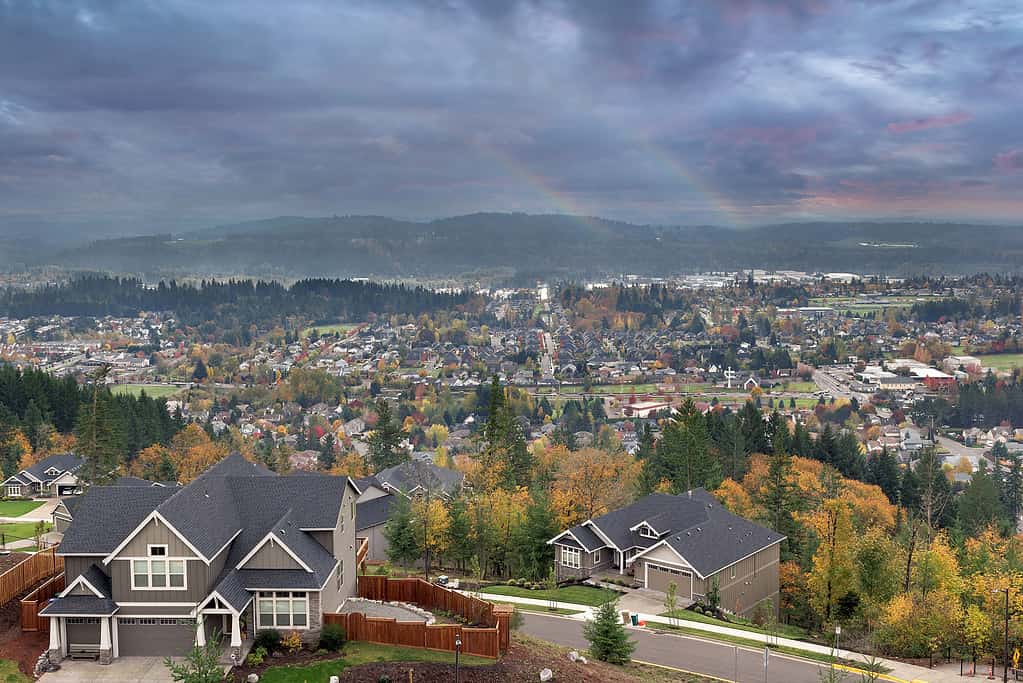
Happy Valley, OR, is only a short drive from Portland. This might be a contributing factor to the town’s rapid growth as people search for more space and affordable housing than what the large city offers.
©thyegn/ via Getty Images
The fastest-growing town in Oregon is Happy Valley. Perhaps its name is part of its allure. Its current population is 29,227 with a 21.43% increase from 2020 when it recorded 24,070 total citizens — that’s about as steep an incline as some of the mountains to hike nearby! Its growth rate each year is about 6.68% and there’s no sign of it slowing down.
Happy Valley is considered a suburb, only ten miles from Portland. Its sharp increase in population might also explain Portland’s decline in population, as more people move outside downtown Portland to its surrounding area. Those living in Happy Valley likely enjoy the best of both worlds: the state’s largest metropolis and easier access to nature trails like those in Mt. Talbert Nature Park.
Oregon’s Fastest-Growing Towns: Conclusion
| Oregon Town | Annual Growth Rate | Population |
|---|---|---|
| 12. Eugene | 0.17% | 175,685 |
| 11. Corvallis | 0.28% | 60,199 |
| 10. Albany | 0.4% | 57,289 |
| 9. Scappoose | 0.54% | 8,146 |
| 8. Sandy | 0.64% | 12,907 |
| 7. Salem | 1.09% | 181,620 |
| 6. Tigard | 1.4% | 57,344 |
| 5. Warrenton | 2.25% | 6,684 |
| 4. Bend | 2.54% | 107,305 |
| 3. Junction City | 4.58% | 7,783 |
| 2. Redmond | 5.31% | 39,463 |
| 1. Happy Valley | 6.68% | 29,227 |
With stunning and diverse natural beauty, compelling history, and rich art scenes, these Oregonian towns and cities offer a lot to tourists and residents, alike! While some experienced a steep population increase since 2020, the annual growth rate can help determine a city’s overall growth and — potentially — predict how well the city can thrive.
Thank you for reading! Have some feedback for us? Contact the AZ Animals editorial team.

